Perhaps this is a question with a trivial answer but nevertheless it is driving me nuts for a couple of days so i would like to hear an answer. I'm recently looking up a lot of information related to building a custom datamapper for my own project (and not using an ORM) and read several thread on stackoverflow or other websites.
It seems very convincing to me to have AuthorCollection objects, which are basically only a container of Author instances or BookCollection objects, which hold multiple Book instances. But why would one need a mapper for the single Author object? All fetch criterias i can think of (except the one asking for the object with a specified BookID or AuthorID) will return multiple Book or Author instances hence BookCollection or AuthorCollection instances. So why bother with a mapper for the single objects, if the one for the appropriate collection is more general and you don't have to be sure that your criteria will only return one result?
Thanks in advance for your help.
Short answer
You don't need to bother creating two mappers for Author and AuthorCollection. If your program doesn't need an AuthorMapper and an AuthorCollectionMapper in order to work smoothly and have a clean source, by all means, do what you're most comfortable with.
Note: Choosing this route means you should be extra careful looking out for SRP violations.
Long(er) answer
It all depends on what you're trying to do. For the sake of this post, let's call AuthorMapper an item data mapper and AuthorCollectionMapper a collection data mapper.
Typically, item mappers won't be as sophisticated as their collection mappers. Item mappers will normally only fetch by a primary key and therefore limit the results, making the mapper clean and uncluttered by additional collection-specific things.
One main part of these "collection-specific things" I bring up is conditions1 and how they're implemented into queries. Often within collection mappers you'll probably have more advanced, longer, and tedious queries than what would normally be inside an item data mapper. Though entirely possible to combine your average item data mapper query (SELECT ... WHERE id = :id) with a complicated collection mapper query without using a smelly condition2, it gets more complicated and still bothers the database to execute a lengthy query when all it needed was a simple, generic one.
Additionally, though you pointed out that with an item mapper we really only fetch by a primary key, it usually turns out to be radically simpler using an item mapper for other things. An item mapper's save() and remove() methods can handle (with the right implementation) the job better than attempting to use a collection mapper to save/remove items. And, along with this point, it also becomes apparent that at times throughout using a collection mappers' save() and remove() method, a collection mapper may want to utilize item mapper methods.
In response to your question below, there may be numerous times you may want to set conditions in deleting a collection of rows from the database. For example, you may have a spam flag that, when set, hides the post but self-destructs in thirty days. I'm that case you'd most likely have a condition for the spam flag and one for the time range. Another might be deleting all the comments under an answer thirty days after an answer was deleted. I mention thirty days because it's wise to at least keep this data for a little while in case someone should want their comment or it turns out the row with a spam flag isn't actually spam.
1. Condition here means a property set on the collection instance which the collection mapper's query knows how to handle. If you haven't already, check out @tereško's answer here.
2. This condition is different and refers to the "evil if" people speak of. If you don't understand their nefariousness, I'd suggest watching some Clean Code Talks. This one specifically, but all are great.





